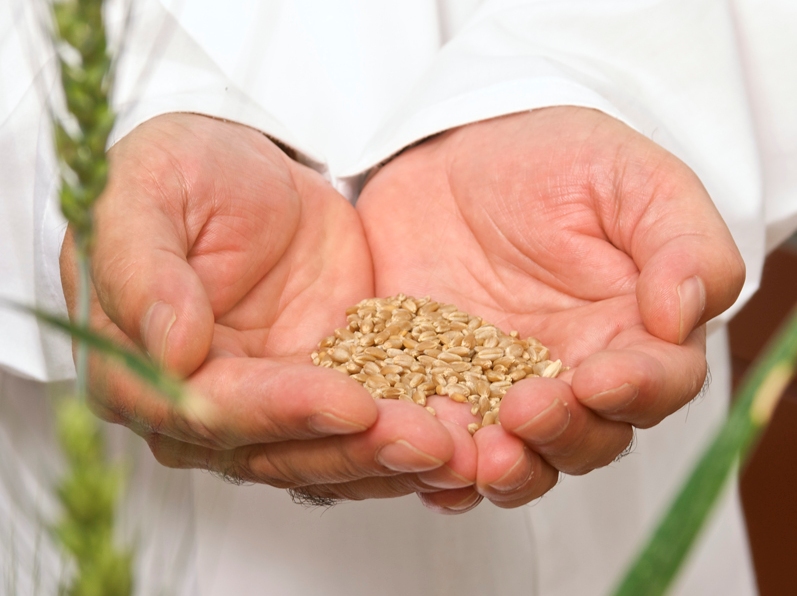
Global food security: Boost grain preservation before production
Better grain storage would save money and feed over a billion
By Digvir S. Jayas
Annually over 2.6 billion tonnes of grains — cereals, oilseeds and pulses — are grown and then stored along the chain from producers to consumers. Most countries do not systematically report how much grain becomes unfit for human consumption during storage, but anecdotal reports suggest it’s worryingly high.
In poorly managed storage systems, such as those leaving grain unprotected on the ground or storing grain without drying, losses can routinely reach 30 per cent, whereas in well-managed systems they are less than one per cent.
Let’s assume a global loss of 20 per cent — 494 million tonnes of grain could be saved by reducing that to one per cent, meeting the needs of an estimated 1.35 billion people (based on an average consumption for citizens of China, the EU and India of one kilogram of grain per person per day).
This amount of grain saved is equivalent to not seeding 247 million hectares of land (assuming average yields of two tonnes per hectare). Imagine the impact of reforesting that land, and saving the water, fuel and fertilizer used to produce the lost grain.
Cutting losses to 1 per cent could be achieved — using current knowledge about grain storage, supplemented with further research and development.
Shift the goal
Global policy makers, politicians and agricultural scientists place a very high priority on finding ways to produce more food for the growing world population. Huge resources have gone into developing high yielding cultivars, for example, and bringing marginal land into production.
But similar attention has not been paid to preserving harvests. If losses are not controlled, 19 per cent more grains would have to be produced to provide the food available currently (allowing for 1 per cent acceptable loss). And preserving harvested grain is generally more cost effective than producing enough to replace losses, even for smallholders, despite costs increasing for smaller storage units.
One reason that policymakers and politicians are not focusing on reducing losses might be because grains are not treated as a national asset, and wastage is not seen as a national loss. Most of the lost grain belongs to individual farmers — but there are national impacts too.
It is the country, in the end, that imports grain to feed its citizens, and loses the potential to export surplus grain. Therefore, countries should provide proper infrastructure to preserve grains, including appropriately designed systems for handling and storage, aeration and drying, and ongoing grain quality monitoring.
Another reason for neglecting food losses might be that an increase in production is easier to celebrate. Reducing losses does not raise production, but rather only raises availability of grains — a less glamorous achievement, perhaps.
Understanding storage ecosystems
Stored grain bulk is effectively an ecosystem, where grain can deteriorate because of either abiotic (physical) variables such as temperature, moisture content and the gases between the grains, or biotic (living) variables such as insects, mites, fungi, and the grain itself.
By understanding and then properly managing these ecosystems grains can be transformed into non-perishable, stable commodities and preserved for a long time. For example, grains can be stored safely for up to three years if their moisture content is reduced to safe levels (12-13 per cent of wet weight) using proper drying techniques, and grain kept cool (under 15 °C) using aeration or chilled aeration.
Sometimes vertebrates such as rodents, birds and other wild animals attack stored grains. However, properly designed systems — such as steel or concrete bins and warehouses on plinths topped with inverted half cylinders — can easily eliminate access.
Because bulk grains are ecosystems, there is a need to train people to understand them. Farmers, for example, must know simple things they can do, like cleaning storage sites of the old grain and debris, which reduces cross contamination of new grain.
Team effort
Engineers, biologists, chemists and economists need to work in multidisciplinary teams to solve grain storage problems. For example, engineers are needed to design systems that manipulate abiotic factors, so that living organisms (for example insects, mites and moulds) are minimized. Chemists and electrical engineers are needed to design sensors for quality monitoring.
Young professionals who will deal with food security should understand the typical issues in grain storage. And students around the world must be challenged to develop appropriate technologies, such as solar drying systems and storage structures using local materials.
Annual loss of grain translates into a great financial loss for farmers, and for countries’ GDP. World agriculture could save US$148.2 billion by preserving just one year’s global losses (based on 494 million tonnes at US$300 per tonne). Good preservation would quickly pay back significant funds invested in design and training for storage systems.
Policymakers, politicians and scientists need the will to make a change — a commitment to prioritise saving grain as much as increasing its production. How can we truly celebrate any increase in grain production if it does not actually make its way to the tables of a hungry world?
This article by Digvir Jayas is reprinted with permission from scidev.net
Distinguished professor Digvir S. Jayas is a grain storage specialist and vice-president (research and international) at the University of Manitoba.
If you’re a researcher looking to express your ideas and explain your research on UM Today, please contact us at umtoday [at] umanitoba [dot] ca
Research at the University of Manitoba is partially supported by funding from the Government of Canada Research Support Fund.







